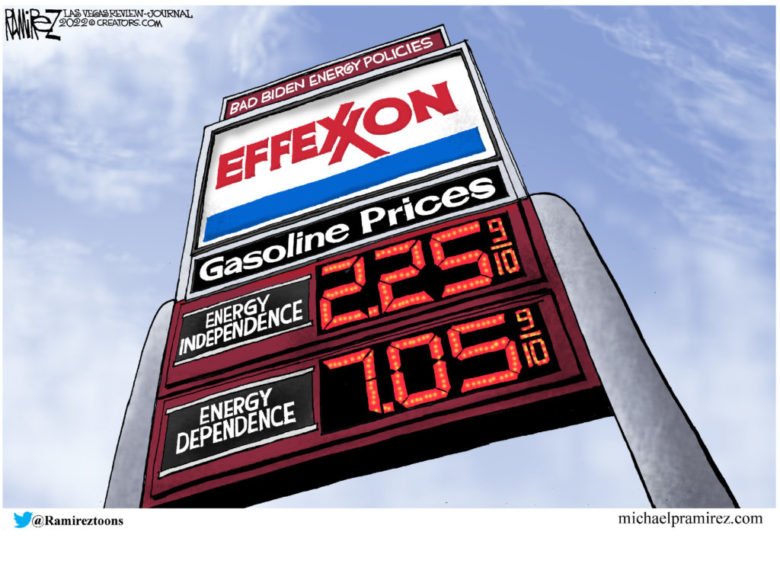Here’s How The Israeli-Hamas Conflict Could Hit Average Americans’ Wallets

- Israel and Hamas are currently at war after a series of surprise terror attacks were launched earlier this month.
- The conflict could expand to include countries like Iran, which would constrict oil supply and possibly send the U.S. and the world into a recession, according to experts who spoke to the Daily Caller News Foundation.
- “International oil prices would spike to over $100 a barrel on supply disruption concerns and financial markets would be rattled by heightened geopolitical uncertainty,” Desmond Lachman, a senior fellow at the American Enterprise Institute, told the DCNF.
The conflict between Israel and Hamas could spell economic disaster for the global economy and for Americans if it further destabilizes the Middle East, according to experts who spoke with the Daily Caller News Foundation.
The Middle East is embroiled in tension after Hamas launched a series of surprise terror attacks against Israel on Oct. 7, resulting in Israel declaring war and preparing for a possible ground invasion into Gaza. An escalation to include neighboring states like Iran could lead to huge oil price spikes, higher inflation and a possible U.S. and world recession, according to experts who spoke to the DCNF.
“The way that the Israel-Hamas crisis affects U.S. households depends very much on how the conflict evolves,” Desmond Lachman, a senior fellow at the American Enterprise Institute, told the DCNF. “If it is confined to Israel and Hamas, the impact on the U.S. household would be negligible. This appears to be the market’s expectation, as indicated by the fact that oil prices have not increased very much. On the other hand, if the conflict were to become region-wide and especially if it were to include Iran, the U.S. household would be adversely affected in a meaningful way.”
Iran-backed militia groups in Iraq and Syria have launched a number of mostly unsuccessful drone and rocket attacks on bases hosting U.S. troops since Oct. 17. Military and defense leaders believe that Iran is undertaking these attacks to provoke the U.S. into outright war in order to cascade the current Israel-Hamas conflict across the Middle East.
“Limited to Israel and Palestine, the economic implications of the conflict would likely be minimal,” Peter Earle, economist at the American Institute for Economic Research, told the DCNF. “But because numerous nations are aligning behind the combatants amid a broader division, there are numerous economic implications. The recent coalescence of BRICS-11, where Brazil, Russia, India, China, and South Africa were joined by Iran, Saudi Arabia, the UAE, Argentina, Egypt, and Ethiopia is explicitly a rampart against Western influence.”
“Most, if not all, of the BRICS-11 are on the other side of the table (or barbed wire) from the US and much of Europe in this conflict,” Earle continued. “So for U.S. consumers, some near-term economic consequences may involve oil (and thus gasoline) prices, the prices and availability of goods imported from China and Brazil (among others), and financial market volatility on 401Ks.”
The coalition added six new countries at the most recent BRICS summit in August, including Egypt, Iran and Saudi Arabia. Russian President Vladimir Putin referred to the group as the “new world order,” with the summit also featuring calls to abandon the dollar as the world reserve currency.
“International oil prices would spike to over $100 a barrel on supply disruption concerns and financial markets would be rattled by heightened geopolitical uncertainty,” Lachman told the DCNF. “Higher oil prices would lead to higher gasoline prices which in turn would be reflected in headline inflation. That would make the Fed’s job all the more difficult in that it would prevent the Fed from reducing interest rates anytime soon.”
The price of oil currently stands at around $85 a barrel, peaking earlier in October at $89.37 per barrel, which was up from a low this year of $66.74 in March, according to Market Insider. The Biden administration recently sought to refill the strategic petroleum reserve at the high price of $79 a barrel after it was depleted of much of its supply to address high gasoline prices.
Inflation has remained persistently high after peaking at 9.1% in June 2022 and then decelerating down to 3.7% for both September and August, despite the Federal Reserve’s 2% inflation target. The price of fuel oil has contributed significantly to the inflation seen in recent months, increasing 8.5% month-over-month in September and 9.1% for the month in August, according to the Bureau of Labor Statistics.
“If two or more major oil-producing nations got into a shooting war, and if they began targeting one another’s oil production facilities, it would send global energy prices skyrocketing,” Earle told the DCNF. “That, plus the numerous consequential impacts, would likely tip an already vulnerable US economy into a recession. It’s…
Read More: Here’s How The Israeli-Hamas Conflict Could Hit Average Americans’ Wallets

